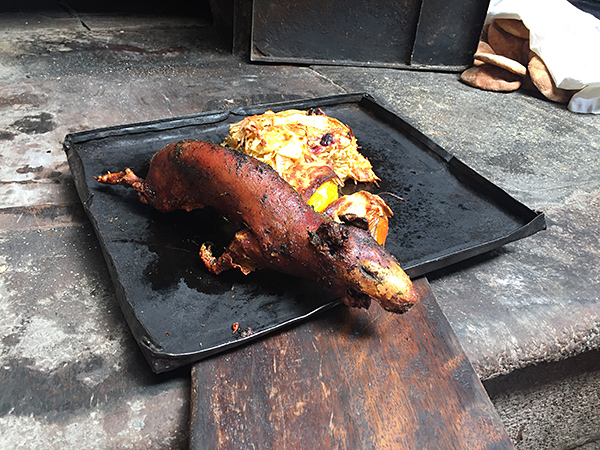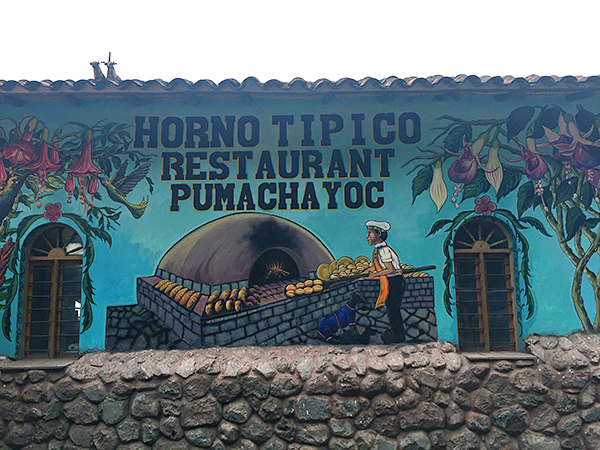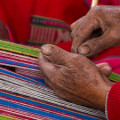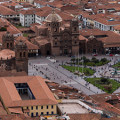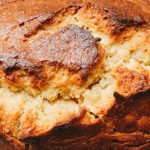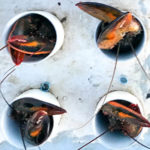The world consumes all sorts of cute animals: rabbits, horses, baby animals (even cats and dogs! but let’s not open that can of worms now) and although Guinea pigs are considered pets in the western world, they’ve been a staple in the Andean communities of Peru, Colombia, Ecuador and Bolivia for the past 5,000 years so who are we to judge? Especially those of us who consume meat of any kind. Yes, I will admit that it’s a bit off-putting as a westerner and the presentation isn’t the most delicate but you must remember that Guinea pigs were always considered a food source in these Andean communities and have helped them strive. They are easy to farm, don’t take up a lot of space or feed and their carbon footprint is much more eco-friendly than cattle, pork or poultry. They are also low in cholesterol and a high source of protein. Apart from alpacas and llamas–which were mainly used for farming and transport–domestic animals were scarce in these parts and the Andean communities relied on cuy (pronounced COO-Y) for their protein intake, but only on special occasions as it was–and still is–a delicacy. In fact, cuyes were revered by these ancient communities. Head to the Cusco Cathedral and admire a local Quechua artist’s rendition of the Last Supper where cuy is being served.
I knew it would be on the menu when I travelled to Peru and was actually looking forward to trying it. Would I have it again? Probably not as the meat is very bony and it doesn’t make for a very satisfying meal. If you are apprehensive (and who wouldn’t be?) here are some tips to get you prepared for that cuy meal.
It’s all in the eyes
Listen carefully as this is probably my most important advice if you decide to go down this road: don’t look the (cute fuzzballs) in the eyes! Don’t do it while they’re alive and you have to act as executioner by picking the furrball you are to sample from the pen in the backyard (I chickened out and skipped that part) and don’t do it when they’re roasted and sitting on a tray whole (yes, that means head, teeth, feet and all) ready for you to eat. It will mess you up if you do. Seriously. Just don’t.
Traditional over contemporary
Peru’s food renaissance and the emphasis on traditional ingredients means that some of Peru’s best chefs are using cuy in their cuisine. I had cuy confit in a fancy restaurant and I had it on the road in Pisac roasted in a traditional clay oven. I prefered the latter by far, although again, the presentation can be quite disconcerting and is not for the faint of heart. Traditionally, cuy is prepared roasted (al forno, more traditional in the Andes) or deep fried (chactado, more popular in Arequipa). If you have the chance to try it roasted, it’s the most traditional and best way.
Use your hands
That’s the only way to eat cuy. In fact, you will be stared at if you don’t use your hands. It’s also much easier to manoeuvre the tiny bones when using your hands (ok now I’m just trying to mess with you).
Tastes like chicken…
… but only if chicken was tougher and a little bit gamier. It might just have been the one cuy I tasted but it was a bit dry and stringy, slightly gamey and tasted mostly like huacatay, the aromatic Andean herb it’s traditionally rubbed with. It’s also very bony and has the same consistency as rabbit, if you’ve ever had that.
Rejoice!
Cuy is a delicacy and eaten when celebrating special occasions so if you know you’re not going to taste it, don’t order it as it would be a shame to offend your hosts by not partaking in the celebration, be it in a private home or a cuyería (a restaurant specializing in cuy).
Where to eat cuy in Peru
I can only speak for Peru where it’s a regional specialty in Cusco and Arequipa. Like I mentioned above, I did see it on a couple of menus in Lima as well. I had the piece of cuy confit at chef Gastón Acurio’s Chicha restaurant in Cusco and cuy al horno at Pumachayoc horn colonial (Avenida Federico Zamalloa), a typical roadside restaurant in Pisac (which also makes delicious sweet and savoury empanadas). I hear La Cusqueñita in Cusco is a bit touristy but a good place to try cuy. Just ask the locals and they’ll be happy to point you in the right direction.
Read more on my Peruvian adventures here and stay tuned for the next chapter soon!


